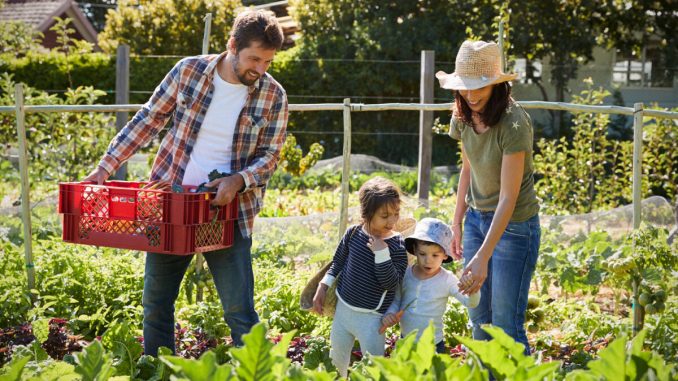

My child arrived just the other day
He came to the world in the usual way
But there were planes to catch and bills to pay
He learned to walk while I was away
And he was talking ‘fore I knew it, and as he grew
He’d say, “I’m gonna be like you, Dad
You know I’m gonna be like you”
—From “Cat’s in the Cradle” by Harry Chapin
At the turn of the 20th century, these song lyrics would have been alien to American culture. With daycare not invented, limited public-school access, and many kids working with parents and or siblings, families were the centerpiece of life and the community’s building blocks.
What a difference a century makes. For postmodern families in the public school system, much of life must be arranged around not only school hours, but increasingly progressive values. While many moms and dads are accustomed to pursuing their own interests separate from the family at large, postmodernists are making up new narratives about everything from gender to climate and impressing them on children in school.
How Did We Get Here?
The predicament has been decades in the making. American families have been becoming increasingly fragmented, finding little time together with fewer group activities to stay connected. As a result of postmodern ideas, family values have been demonized as oppressive to women, stifling to children, and supportive of toxic masculinity.
However, the real social experiment is to increasingly let the state, through public school education, become the new influence and authority over children in place of the family. Do conservative families believe that the essential values of life can be transferred to the next generation through government programs? Many have already answered that question decidedly and taken a different path.
Consider Homeschooling
According to the National Home Education Research Institute, prior to 2019, the homeschool population had been growing an average of 2 to 8 percent per year, but that drastically increased in 2020 due to COVID-19 restrictions. Children all over the country were forced to school at home for the first time. Parents got a closer look at what was being taught and realized firsthand that their values weren’t always the school’s priority.
For some, this mandatory trial melted away most of the obstacles that kept home education from even being considered. Some families may consider continuing to homeschool after lockdown measures are lifted, though some parents may be reluctant to leave life centered around the school system. Here I would like to make a case for recentering your life around family via homeschooling.
This summer is a perfect time to regroup before the upcoming school year. Do you long for your kids to come to you with their thoughts? Are you beginning to see your children embrace ideas that aren’t healthy for the family? Have you, as a parent, become less influential in your child’s life than you anticipated? Answer these questions to see if your family is the hub of life:
How much time per day are the children with one or both parents?
How much time per day are children and parents engaged in the same activity that doesn’t involve a screen?
How much time do you spend in face-to-face contact with your child?
Most children are in school close to eight hours per day, not counting extracurricular activities. Even if only one parent is involved in the day-to-day education of the child, opportunities for interactions will increase exponentially. But the extra time isn’t the only tool to bring the family back into focus. It turns out that many of the peer relations and progressive ideologies in public school work directly against our efforts as parents.
Ask yourself these questions:
Are there current or looming state mandates that promote postmodern thought and demonize conservative values in the local school district?
How much time per day are the children with friends, including via social media?
When an issue arises, which perspective is most important in your child’s mind—their family’s or their friends’?
On average, do your kids have engaging conversations more often with your family or with their friends?
A Journey Together
Home educating can bring a healthier balance in children’s relationships with friends and family. Of course, friendless children aren’t the solution or the goal, but bringing these relationships into a responsible balance is a huge step toward bringing the family back to its rightful place as the hub of life. Schooling at home also gives parents a chance to hand down the conservative values from which they themselves have benefited.
Once a family decides to home educate, it’s comparable to an empty slate or sweeping a house clean, but this is only as good as what you arrange back into the void. This is where the fun can really begin. Explore curriculums, book lists, and new hobbies. Finding activities to bring your family together will demonstrate to parents how much they themselves needed homeschooling.
Nothing compares to solving a real-time problem with the goal being not only solving the problem, but also growing together on the journey. This is often more challenging for the parents than it is for the kids. Even teens often want closer ties with parents, but parents are too impatient, distracted, and goal-driven to see their child’s needs.
Depending on the ages of the children, make goals to jointly work on reading, preparing a meal, or gardening. Sometimes the project will come up short compared to how you could have completed it alone, but this way, your family will start to become a cohesive unit. As parents recognize the emerging growth in their son or daughter, they won’t want anything to keep them from a front-row seat.
Mom and Dad, don’t give up as you make family a priority. Rusty hinges don’t swing easily or immediately. Likewise, these relationships may be slow to warm up, but as your children see your genuine interest in them, they will share more of their thoughts and dreams, and the family will again become the hub of life.
Tricia Fowler is a Christian homeschooling momma in the Midwest. She currently spends much of her time teaching math, feeding sourdough, and helping with whatever is in season on the hobby farm she shares with her husband and seven children.






Be the first to comment